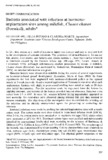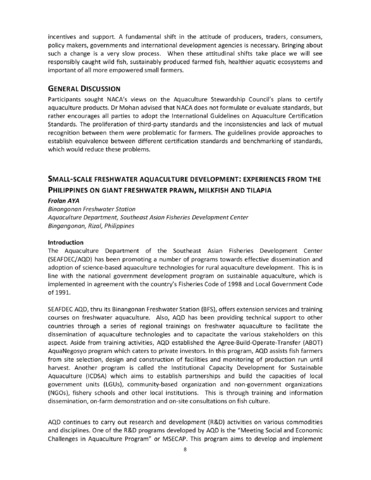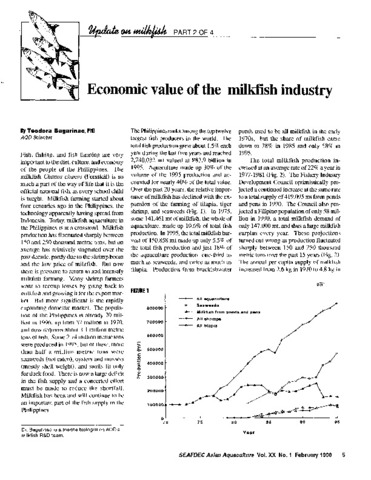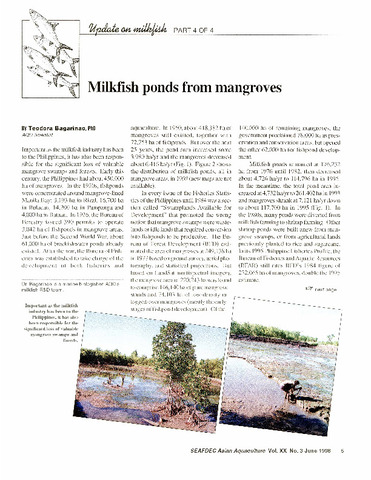Bacteria associated with infection at hormone-implantation sites among milkfish, Chanos chanos (Forsskal), adults
Share
Description
SEAFDEC Contribution No. 164. Paper presented at the Second International Warmwater Fish Conference at Laie, Hawaii, 5–8 February 1985.
Suggested Citation
Lio-Po, G., Pitogo, C., & Marte, C. (1986). Bacteria associated with infection at hormone-implantation sites among milkfish, Chanos chanos (Forsskal), adults. Journal of Fish Diseases , 9(4), 337-343. https://doi.org/10.1111/j.1365-2761.1986.tb01023.x
Subject
Taxonomic term
Collections
- AQD Journal Articles [1248]
Related items
Showing items related by title, author, creator and subject.
-
Small-scale freshwater aquaculture development: Experiences from the Philippines on giant freshwater prawn, milkfish and tilapia
Aya, Frolan (Japan International Cooperation Agency, 2013-12)The Aquaculture Department of the Southeast Asian Fisheries Development Center (SEAFDEC/AQD) has been promoting a number of programs towards effective dissemination and adoption of science-based aquaculture technologies ... -
Economic value of the milkfish industry
Bagarinao, Teodora (Aquaculture Department, Southeast Asian Fisheries Development Center, 1998)A brief description is given of the milkfish (Chanos chanos) farming industry in the Philippines. Over the past 20 years, the relative importance of milkfish has declined with the expansion of tilapia, tiger shrimp and ... -
Milkfish ponds from mangroves
Bagarinao, Teodora (Aquaculture Department, Southeast Asian Fisheries Development Center, 1998)




